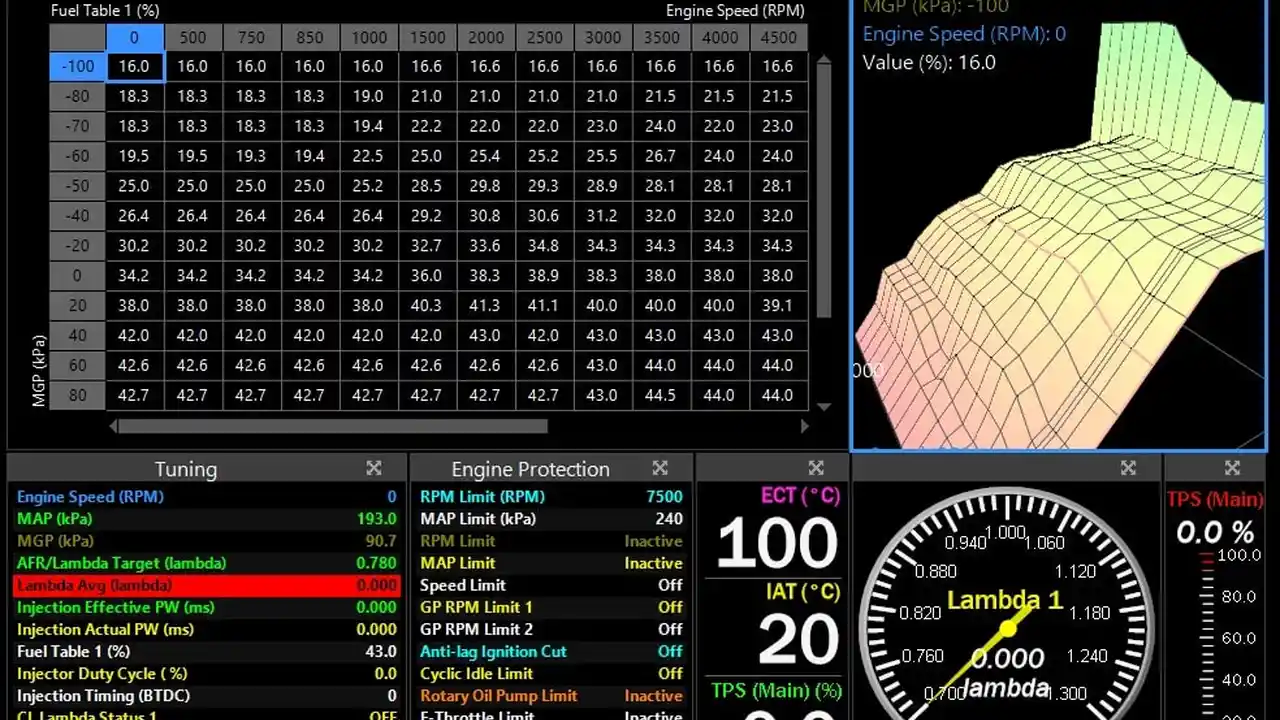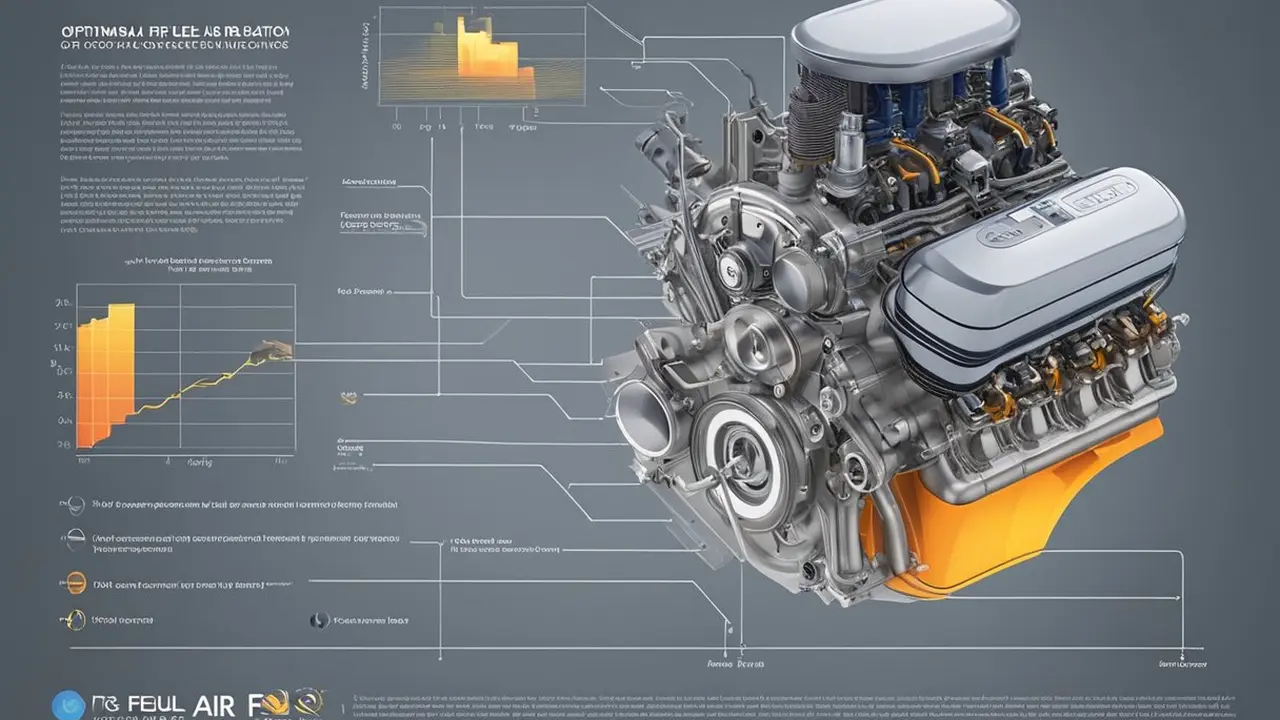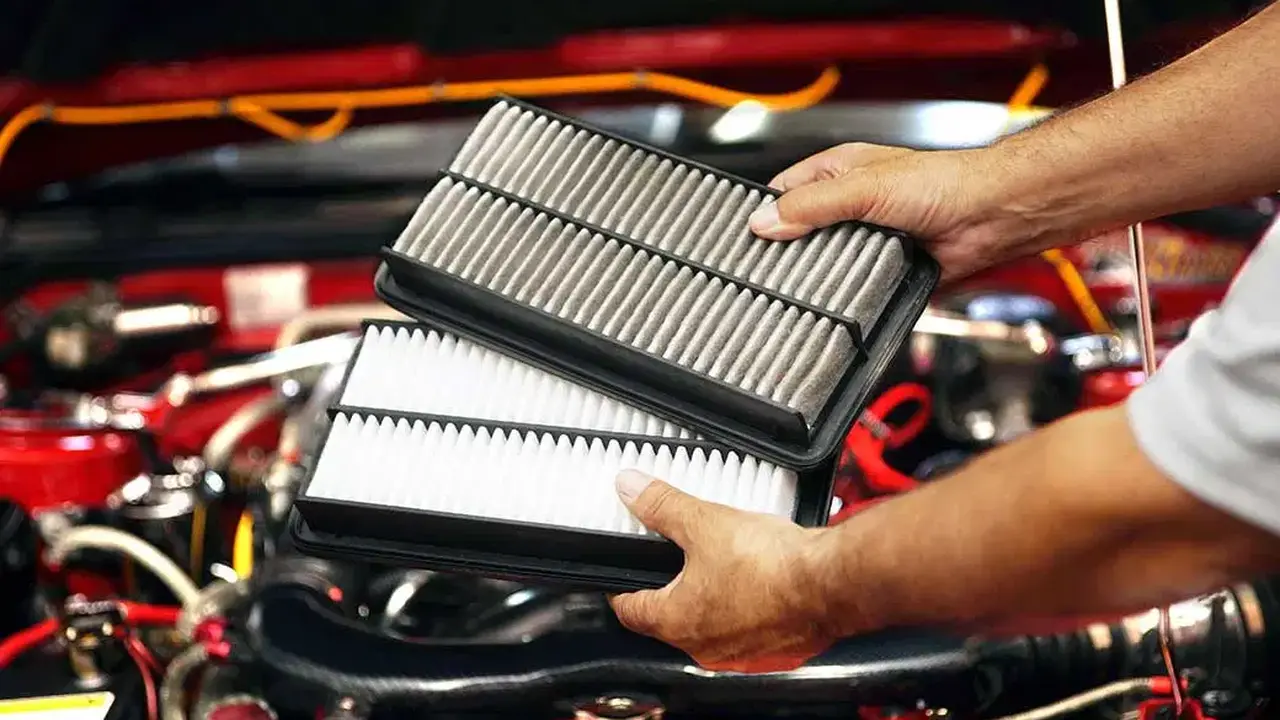ECU Tuning: A Beginner's Guide to Performance Mapping

ECU tuning can significantly improve your car's performance. This guide covers the basics of ECU mapping, explaining how to adjust parameters for optimal power and fuel efficiency. Learn how to safely tune your ECU and avoid common mistakes.
Understanding the Basics What is ECU Tuning
Okay, let's dive into the world of ECU (Engine Control Unit) tuning! Think of the ECU as the brain of your car's engine. It controls pretty much everything – fuel injection, ignition timing, and even things like idle speed. From the factory, the ECU is programmed with a generic map that's designed to work well for a wide range of conditions and driving styles. But, that also means it's not optimized for *your* specific car, modifications, or driving preferences.
ECU tuning, or "mapping" as some people call it, is the process of modifying the software inside the ECU to optimize engine performance. We're talking about tweaking those parameters to get more horsepower, better fuel economy, or even just a smoother driving experience. It's like giving your engine a custom-tailored suit instead of something off the rack.
Why Bother with ECU Tuning The Benefits Explained
So, why would you even want to mess with your ECU? Well, there are a few key reasons:
- Increased Horsepower and Torque: This is the big one! By optimizing fuel and ignition, you can often squeeze out a significant amount of extra power from your engine.
- Improved Throttle Response: A well-tuned ECU can make your throttle feel much more responsive and direct. No more lag or hesitation when you put your foot down.
- Better Fuel Economy: Believe it or not, tuning can actually *improve* fuel economy in some cases. By optimizing the air-fuel ratio, you can burn fuel more efficiently.
- Accommodation of Modifications: If you've installed aftermarket parts like a cold air intake, exhaust system, or turbocharger, you *need* to tune your ECU to take advantage of those upgrades. Otherwise, you're leaving performance on the table (or worse, potentially damaging your engine).
- Customization: You can tailor the ECU map to your specific driving style and preferences. Want more aggressive acceleration? More emphasis on fuel economy? It's all possible with tuning.
Key Parameters Fuel Maps Ignition Timing and More
Alright, let's talk about some of the things that ECU tuners actually adjust. These are the key parameters that control how your engine runs:
- Fuel Maps: These maps determine how much fuel is injected into the engine at different RPMs and load conditions. Tuning the fuel maps involves adjusting the air-fuel ratio (AFR) to ensure optimal combustion. Too lean (not enough fuel) can damage your engine, while too rich (too much fuel) can waste fuel and reduce power.
- Ignition Timing: This refers to the point in the engine cycle when the spark plug fires to ignite the air-fuel mixture. Advancing the timing (firing the spark plug earlier) can increase power, but too much advance can cause knocking or detonation, which is very bad for your engine.
- Boost Control (for Turbocharged Engines): If you have a turbocharged engine, the ECU controls the amount of boost (air pressure) that the turbocharger produces. Tuning the boost control system allows you to increase boost for more power, but it's important to do so safely and within the limits of your engine.
- Idle Speed: This is the RPM at which your engine idles when you're not pressing the gas pedal. Tuning the idle speed can help prevent stalling and ensure a smooth idle.
- Rev Limiter: This is the maximum RPM that your engine can reach. Tuning the rev limiter can allow you to rev your engine higher for more power, but it's important to do so safely and within the limits of your engine's components.
Different Tuning Methods Flash Tuning Piggyback ECUs and Standalone ECUs
There are several different ways to tune your ECU, each with its own advantages and disadvantages:
- Flash Tuning: This involves directly reprogramming the factory ECU with a new map. It's the most common and generally preferred method for most cars. You'll need a special tuning tool and software to do this. The advantage is that it's a clean and integrated solution.
- Piggyback ECUs: These are devices that intercept and modify the signals between the factory ECU and the engine. They're often easier to install than standalone ECUs, but they're not as powerful or flexible as flash tuning or standalone ECUs. They can be a good option for simple modifications or for cars where flash tuning is not available.
- Standalone ECUs: These are completely new ECUs that replace the factory ECU. They offer the most flexibility and control, but they're also the most expensive and complex to install and tune. They're typically used for heavily modified engines or for racing applications.
Choosing the Right Tuning Method for Your Needs
The best tuning method for you will depend on your car, your budget, and your performance goals. For most people, flash tuning is the best option. It provides a good balance of performance, cost, and ease of use. Piggyback ECUs are a decent option for simple mods, but standalone ECUs are only really needed for serious builds.
Essential Tools and Software for ECU Tuning
If you're planning to tune your ECU yourself, you'll need a few essential tools and software:
- Tuning Software: This is the software you'll use to create and modify ECU maps. Some popular options include Cobb Accessport (for Subaru, Mazda, and Porsche), HP Tuners (for GM and Ford), and EcuFlash (a free, open-source option).
- OBD2 Interface Cable: This cable connects your laptop to your car's OBD2 port, allowing you to read data from the ECU and upload new maps.
- Wideband O2 Sensor: This sensor measures the air-fuel ratio in your exhaust, providing crucial feedback for tuning. A wideband O2 sensor is essential for accurate and safe tuning.
- Data Logging Software: This software allows you to record data from your engine while you're driving, providing valuable information for tuning. Most tuning software includes data logging capabilities.
- Multimeter: A multimeter is a useful tool for diagnosing electrical problems and verifying sensor signals.
Safety Precautions and Common Mistakes to Avoid
ECU tuning can be risky if you don't know what you're doing. Here are a few safety precautions and common mistakes to avoid:
- Don't Overdo It: It's tempting to push your engine to its limits, but it's important to stay within safe parameters. Too much boost, too much timing advance, or too lean of an air-fuel ratio can damage your engine.
- Monitor Your Engine: Keep a close eye on your engine's vital signs, such as coolant temperature, oil pressure, and air-fuel ratio. If you see anything unusual, stop tuning and investigate the problem.
- Start Small: Make small changes to your ECU map and test them thoroughly before making larger changes. This will help you avoid making mistakes that could damage your engine.
- Get Professional Help: If you're not comfortable tuning your ECU yourself, it's best to seek the help of a professional tuner. They have the experience and expertise to tune your engine safely and effectively.
- Don't Ignore Knock: Knocking (also known as detonation) is a sign that your engine is under too much stress. If you hear knocking, immediately reduce boost or retard timing.
ECU Tuning Products Recommendations and Comparisons
Let's look at some specific products you might consider for ECU tuning:
Cobb Accessport
The Cobb Accessport is a very popular option, especially for Subaru, Mazda, and Porsche vehicles. It's a handheld device that allows you to flash pre-made or custom tunes to your ECU, monitor engine parameters, and data log.
Use Case: Perfect for those wanting a simple, user-friendly interface and the ability to easily switch between different maps (e.g., a performance map and a fuel economy map).
Pros: Easy to use, large community support, pre-made maps available, datalogging capabilities.
Cons: Can be expensive, locked to one vehicle.
Price: Around $600-$1000 depending on the vehicle.
HP Tuners MPVI2/MPVI3
HP Tuners is a powerful tuning platform primarily used for GM and Ford vehicles. It allows you to completely customize your ECU maps and offers advanced features like real-time tuning. The MPVI3 is the latest version, offering faster data logging and improved performance.
Use Case: Ideal for more experienced tuners who want complete control over their ECU and need advanced features like custom operating systems.
Pros: Highly customizable, advanced features, supports a wide range of vehicles.
Cons: Steeper learning curve, can be expensive to get started with credits.
Price: MPVI3 device around $400, plus credits needed to tune specific vehicles (around $50-$150 per vehicle).
EcuFlash and Openport 2.0
EcuFlash is a free, open-source tuning software, and the Openport 2.0 is a popular interface cable that works with it. This combination is a budget-friendly option for those who are comfortable with a more technical approach.
Use Case: Great for enthusiasts who want to learn the ins and outs of ECU tuning and are comfortable with a more hands-on approach.
Pros: Free software, relatively inexpensive hardware, supports a wide range of vehicles.
Cons: Steeper learning curve, requires more technical knowledge.
Price: Openport 2.0 cable around $200.
Product Comparison Table
| Product | Ease of Use | Customization | Vehicle Support | Price |
|---|---|---|---|---|
| Cobb Accessport | High | Medium | Limited (Subaru, Mazda, Porsche) | $$$ |
| HP Tuners MPVI3 | Medium | High | Wide (GM, Ford) | $$$$ |
| EcuFlash/Openport | Low | High | Wide | $$ |
The Importance of Professional Dyno Tuning
While you can do some basic tuning on the street, the best way to get the most out of your ECU tune is to have it done on a dyno. A dyno is a machine that measures your engine's horsepower and torque output. This allows the tuner to make precise adjustments to your ECU map while monitoring the engine's performance in real-time.
Dyno tuning is especially important for heavily modified engines or for racing applications. It allows the tuner to optimize the engine's performance for specific conditions and to ensure that the engine is running safely.
Street Tuning vs Dyno Tuning Which is Better
Street tuning involves making adjustments to your ECU map while driving on the road. This can be a good way to fine-tune your ECU map after it's been initially tuned on a dyno. However, street tuning is not as accurate or safe as dyno tuning. It's difficult to control the conditions on the road, and it's easy to make mistakes that could damage your engine.
Dyno tuning is the preferred method for most ECU tuning applications. It provides a controlled environment, allows for precise adjustments, and ensures that the engine is running safely.
Final Thoughts Taking the Next Steps in ECU Tuning
ECU tuning can be a rewarding experience, allowing you to unlock the full potential of your engine. Whether you choose to tune your ECU yourself or seek the help of a professional, it's important to do your research and understand the risks involved. With the right knowledge and tools, you can safely and effectively tune your ECU for optimal performance.
:max_bytes(150000):strip_icc()/277019-baked-pork-chops-with-cream-of-mushroom-soup-DDMFS-beauty-4x3-BG-7505-5762b731cf30447d9cbbbbbf387beafa.jpg)






